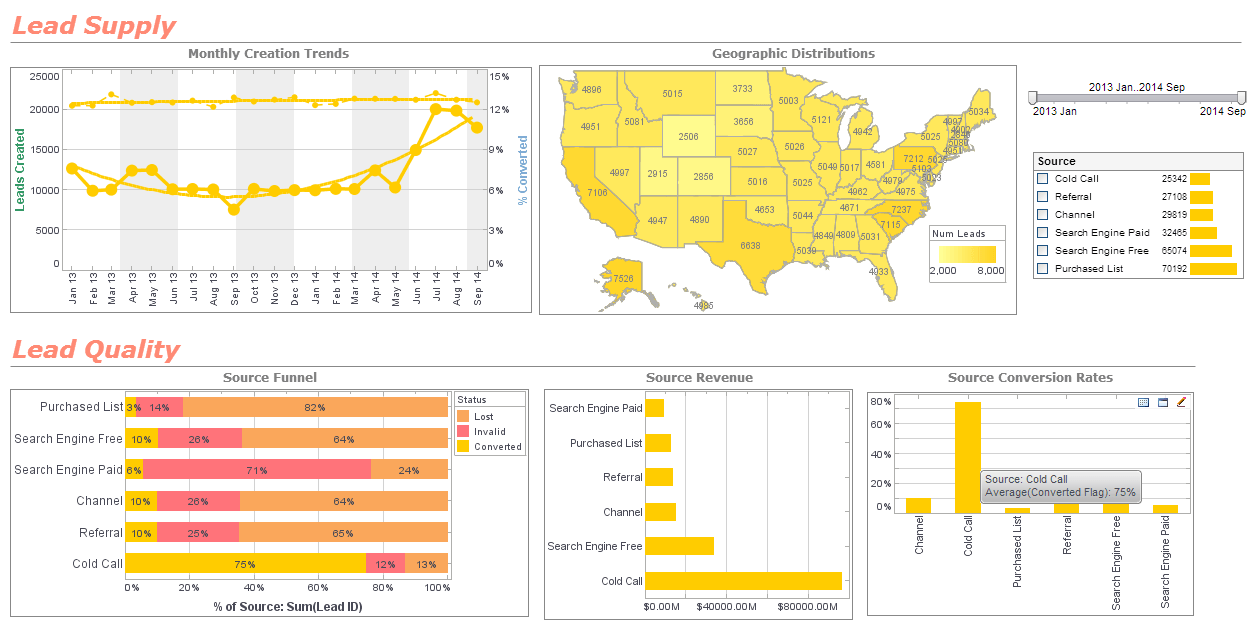Designing and Using Scorecards
Below is the continuation of a transcript of a Webinar hosted by InetSoft on the topic of "Performance Management in Governement." The presenter is Christopher Wren, Principal Consultant at GPM.
When using a scorecard, what is the recommended timeframe to monitor or measure targets before adjusting them?
That brings up a great point, which is you need at least one complete cycle. I don�t know whether that's going to be a fiscal year, a calendar year, whatever your regular calendar cycle is to baseline. I think one of the things people could go down the road which they don�t want to, is instantly have a target before giving yourself enough time to understand where you are today given your current resource level, given fluctuations that happened during the course of the year, et cetera.
So whatever your cycle is, and a solid four quarters at a minimum is needed to baseline. That's because there are usually seasonalities to take into account. One federal agency where we were working recently, they only baselined for a month. But what they didn�t realize was that things changed dramatically towards the end of the fiscal year. So don�t cut it short, give yourself solid four quarters at a minimum to do that baseline work to make sure that you can see the full picture on all the fluctuations that may happen during the course of the full year.
| #1 Ranking: Read how InetSoft was rated #1 for user adoption in G2's user survey-based index | Read More |
This is a question we get a lot. I often think about a real life case study that came out of the Bank of America. The Bank of America at one time was trying to measure teller performance and they were using almost 30 measures to measure individual teller performance. Well at the end of the year performance hadn�t improved at all. When they went back and did a focus group with the tellers, the tellers said you know we couldn�t remember what you were actually measuring as there were too many.
And you may have heard this in the science and the research. Really most people can really only remember between 5 and 7 measures in their head. Beyond that they have to start to forget, and you want people to be able to remember their measures as they go about their daily work. You want that to be kind of in the back of their minds, so they understand what is the bottom-line for this activity. It should become kind of incorporated into the value structure and why people are doing things they are doing. If you get much beyond 15 to 20 measures at a strategic level for an organization, then people are not going to be able to keep them straight.
You also run into the problem when you get past 20 measures or so, that some of the measures may be in conflict with each other. So that's another reason to keep this number down to a very bare minimum and at an organizational level, even larger organizations we don�t recommend people go much beyond 20 or 25 measures. There was a large project with US Navy and the Marine Corps where they were measuring a contractor on over 200 separate items and the contract still ran into a lot of problems.
As this was a performance based contract, things still were not going well. While a new project manager came in and said you know what, more measures are not necessarily better and more measures in this case were confusing the Navy employees as well as the contractor. They cut it back all the way to about 22 measures, and this is for a very large project and performance increased dramatically the next fiscal year. So try to keep it down to somewhere less than 20 measures at an organizational level at an individual level five to seven seems to be about as many as you would want for any one individual.
| Previous: Segmenting Callers into Clusters |


